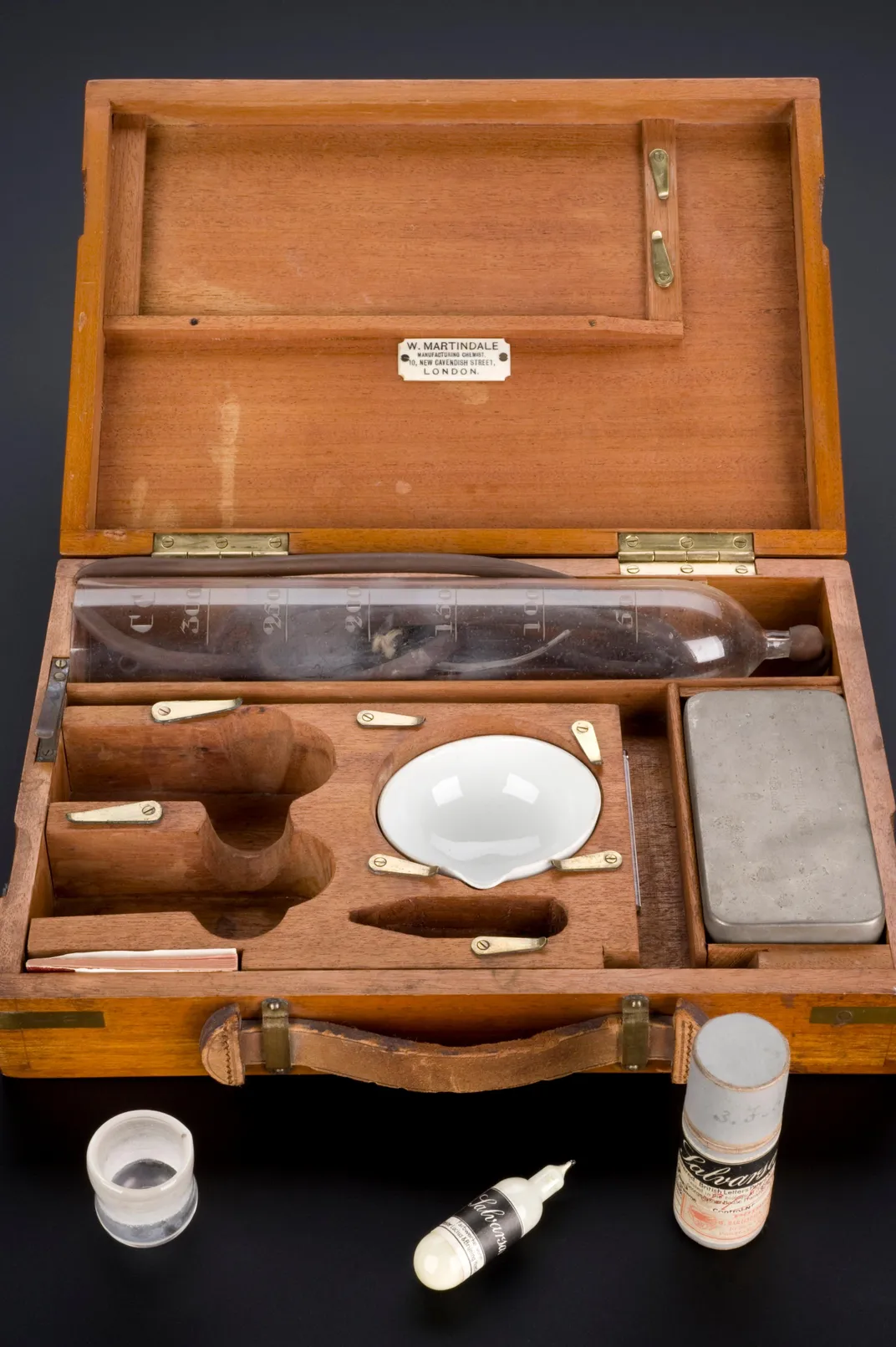The First Syphilis Cure Was the First ‘Magic Bullet’
The term ‘magic bullet’ once just meant a targeted drug
/https://tf-cmsv2-smithsonianmag-media.s3.amazonaws.com/filer/4e/fd/4efd50e6-eedb-41d5-9d48-3f7c1140033d/ehrlich.jpg)
The first magic bullet was fired at syphilis on this day in 1909.
Although specific diseases responded better to some drugs than to others, before the early 1900s development of Salvarsan, an arsenic-based drug to treat syphilis, drugs weren’t developed to target a specific disease. A German biochemist named Paul Ehrlich changed all that when he targeted syphilis, a disease that had plagued Europe for 500 years.
“In 1906 Ehrlich prophesied the role of modern-day pharmaceutical research, predicting that chemists in their laboratories would soon be able to produce substances that would seek out specific disease-causing agents,” writes the Chemical Heritage Foundation. “He called these substances ‘magic bullets.’”
These magic bullets would destroy infectious microbes without hurting the people who harbored them. Ehrlich had been looking for them since the 1870s, writes Hadley Leggett for Wired, but it took him a long time to find one that worked for any illness.
Ehrlich was innovative in seeing the body’s immune response as a matter that could be studied by chemists. “ He saw toxins and antitoxins as chemical substances at a time when little was known about their exact nature,” writes the Chemical Heritage Foundation. This perception, which earned him the 1908 Nobel Prize in Medicine, led him to see that chemicals introduced into the body could help it in fighting disease–if they were the right chemicals for the right disease.
When his collaborator Sahachiro Hata finally tested Ehrlich’s syphilis drug on a rabbit on this day in 1909, it seemed they’d truly found one. “Hata injected chemical No. 606 into a rabbit with syphilitic ulcers,” writes Leggett. “The next day, no live [syphilis bacteria] could be found on the animal's ulcers, and within three weeks, the ulcers were completely gone.”

Syphilis was a big problem in Europe at this time. “Historians mining the archives of prisons, hospitals and asylums now estimate that a fifth of the population might have been infected at any one time,” writes Sarah Dunant for The Guardian. By the 1920s, writes Stefan H. E. Kaufmann in Nature Reviews Drug Discovery, Ehrlich’s innovations had dramatically improved the situation.
Previous treatments for “the French disease” were horrifying and ineffective. “The old adage 'a night with Venus; a lifetime with Mercury' reveals all manner of horrors, from men suffocating in overheated steam baths to quacks who peddled chocolate drinks laced with mercury so that infected husbands could treat their wives and families without them knowing,” Dunant writes. “Even court fashion is part of the story, with pancake makeup and beauty spots as much a response to recurrent attacks of syphilis as survivors of smallpox.”
Syphilis was known to be a sexually transmitted infection, but the microbe that caused it—the bacteria Treponema pallidum, which attacks the nervous system and the organs–wasn’t identified until 1905. The next year, Ehrlich and his colleagues started looking for its magic bullet, according to Chemical Heritage.
Salvarsan, an arsenic-based drug, proved to be just that. It was the result of three years of testing of different arsenical compounds–300 of them, according to the Chemical Heritage Foundation. Salvarsan was on the market by 1910, writes Amanda Yarnell for Chemical and Engineering News, and quickly became the most widely prescribed drug in the world.
"It was the world's first blockbuster drug and remained the most effective drug for syphilis until penicillin became available in the 1940s," Yarnell writes. But it didn't work well with patients in the later stages of syphilitic infection, as well as being hard to administer. In fact, some of the side effects that it was said to cause were actually caused by physicians being unable to properly administer the drug, writes Yarnell. Ehrlich observed that "the step from the laboratory to the patient's bedside... is extraordinarily arduous and fraught with danger." In response to these issues, Ehrlich synthesized a refined compound, Neosalvarsan, by 1914.
Salvarsan was a big deal for syphilis sufferers, but the work of Ehrlich and his collaborators also changed how disease was thought of and how drugs were developed. The fact that his drug was on the market within a year of being developed shows how new his approach to medicine was.